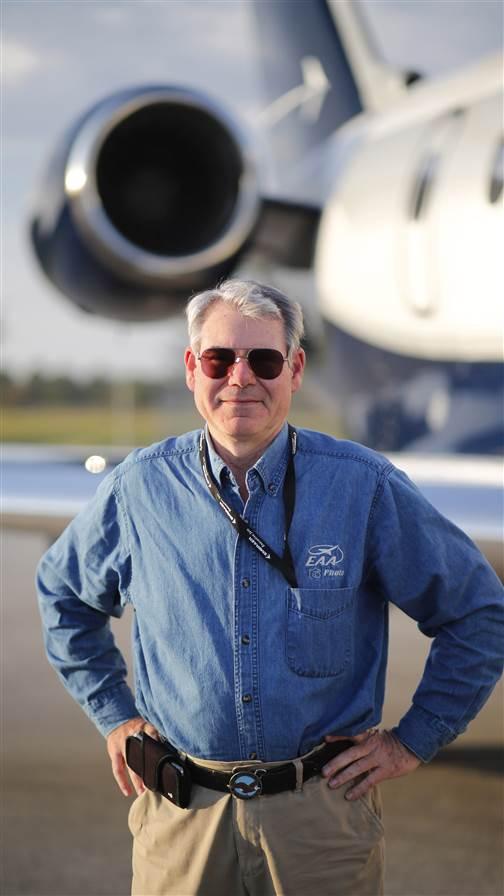 Bruce Moore’s love of flying and photography started the same year. “I began flying when I was 16 years old, and I got my first 35-millimeter camera about the same time,” Moore said. “I’ve been taking pictures of airplanes everywhere I go ever since.” Now 65, Moore is best known for flying the photo ship in air-to-air photography flights with subject airplanes ranging from ultralights to supersonic fighters. He plans and briefs each mission, and he typically handles the navigation and ATC communication for all participants. “Photo flying is a team effort, and that’s what I find so satisfying,” he said. “When the light’s just right, there’s an interesting background, and a cool subject—it’s just magic.”
Bruce Moore’s love of flying and photography started the same year. “I began flying when I was 16 years old, and I got my first 35-millimeter camera about the same time,” Moore said. “I’ve been taking pictures of airplanes everywhere I go ever since.” Now 65, Moore is best known for flying the photo ship in air-to-air photography flights with subject airplanes ranging from ultralights to supersonic fighters. He plans and briefs each mission, and he typically handles the navigation and ATC communication for all participants. “Photo flying is a team effort, and that’s what I find so satisfying,” he said. “When the light’s just right, there’s an interesting background, and a cool subject—it’s just magic.”
How did you get started in aviation? My father flew in the Army Air Force in World War II, and when I was little he owned a Tri-Pacer in which my mother got her private pilot certificate. I think it was my father’s stories of his military flying that got me hooked more than anything else; he was a great storyteller.
Hardest lessons? The hardest lessons were the ones where I learned from failure. You want everything to go well and you want to be successful, but that isn’t always going to be the case. Learn from what didn’t work. Try and figure out how you could have done a better job. Was it a lack of knowledge or skill? How can you improve your deficiencies? Who can you get to teach or mentor you?
Biggest challenges? Like all new professional pilots the toughest challenge was trying to earn a living while building the experience required to get a good-paying flying job. You have to pay your dues in aviation. Use this time to build your skills and take professional satisfaction from a job done well (and from the fact that you are flying, not sitting on the ground).
Favorite aircraft? My favorite airplane is the North American AT–6/SNJ Texan. It has light controls with beautiful control harmony, and the music from its nine-cylinder R-1340 Wasp will give you goose bumps. It is fully aerobatic and, if you know your energy management, it can put on quite a show. The best part is that you are flying a piece of history, flying the airplane that trained more than 100,000 Allied fighter pilots.
Advice for students? Don’t stop learning. Read everything you can find about flying and aviation. Hang out with working pilots; their stories and experiences can be a big part of your aviation education. When I was a young flight instructor, I would visit the hangar and help and talk with the mechanics. The more you know about how an airplane works, the more skillfully you can fly it.
Web: www.photo-one.us


